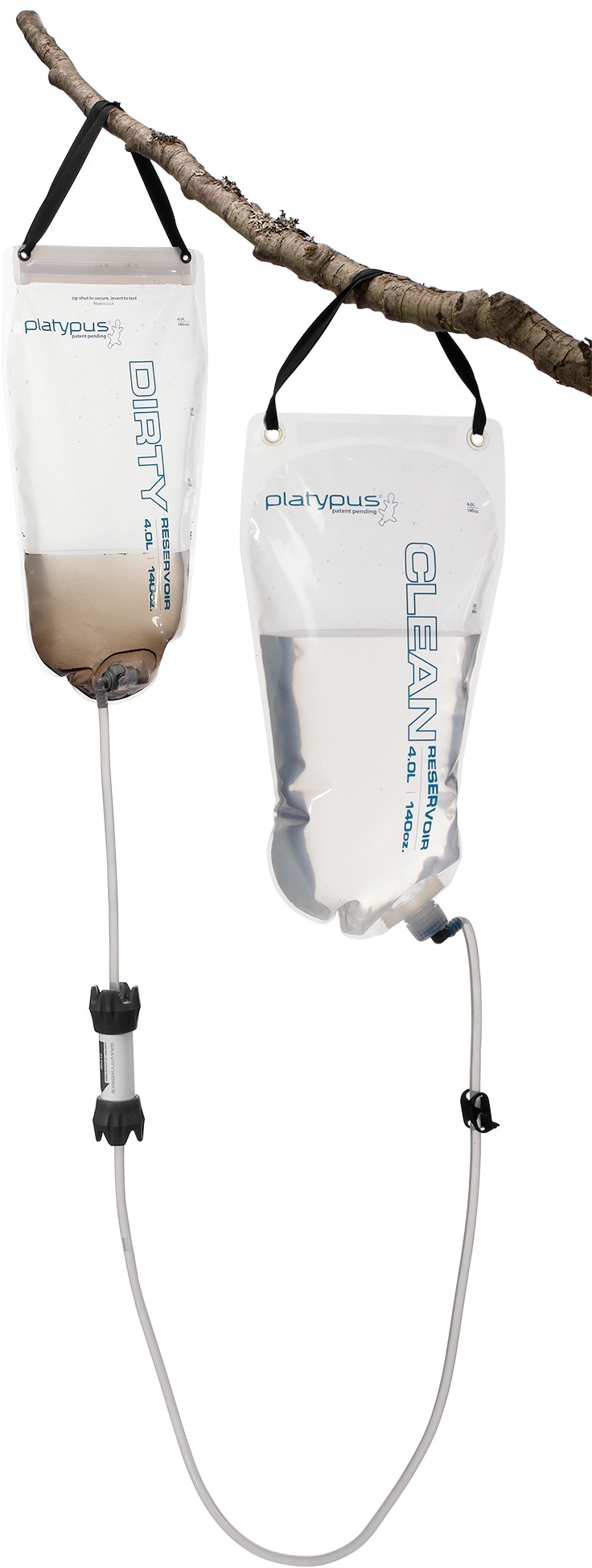
Who loves water? You do. You have to, I don’t care what you say. You are biologically engineered to love it. On an average day, doing nothing above average, the average healthy male human being needs at least 3 liters of water just to walk around and pick his nose. Now, when that same guy goes on a multi-day hiking trek into the backwoods of the high country, he will then need several gallons per day. Who wants to pack that weight and space out into the woods? Nobody.
The answer is making your own purified water along the way. There are a lot of ways to filter and purify water you come across on a hike, and there are a wide variety of products and technologies to choose from. I’ve created a shootout to compare these products, examine their technologies, and show what to look for when you start shopping around.
A lot of people wonder why we need to filter mountain water in the first place. It’s up high away from civilization, flowing clear, probably from a spring. Isn’t bottled water “bottled at the source?” Yeah, well, when you are hiking, you are more likely to come across a stream than a spring spouting directly from a rock face. Streams, as clean as some may look, carry feces, urine, and dead animals in the current, and with them are an assortment of biological contaminates. Protozoa, viruses, bacteria, oh my. You do not want to be caught with vomiting, fever, or BMs out in the middle of nowhere. Not only does it make you miserable, but you need your strength to ward off nature enough as it is.
So, you need a backcountry water filtration system, but what do you look for? There are UV lights, filters with ‘micron’ ratings, chemical treatments, and even electronic options. Where do you start? Just like everything else in your ruck, you first decide on the average use for the product and then compare products to determine what meets that use best. Use this shootout to do just that.
To view the full page, go here.
A few things to note before you just pick the lightest, smallest, or cheapest filter:
- UV light doesn’t actually kill anything, but it does “neuter” all biological contaminates so they will not be able to reproduce. Some people are weirded out by that, others aren’t, but either way, it is safe.
- Particulate filters (the products with “micron” ratings) are only useful above freezing temperatures. If water freezes in a particulate filter, it will crack and you will have to buy a new one.
- The micron rating is actually a measurement of the size of the smallest organism that the filter can trap. Smaller ratings mean better filtration, but generally slower flow rates.
- Chemical treatments can change the taste of the water, which sort of ruins the experience of drinking fresh mountain water. The MIOX, Iodine, and ClO2 all affect the taste of water. Most tastes can be neutralized by carbon treatments, but that’s just one more thing to carry.
- Gravity filters require the least physical labor, while pump filters typically have a higher flow rate.
- There are also bottles with integrated filters that save on space. I have not included any in the shootout, but they incorporate the same technologies compared here.
- Take into consideration that you might not always have a particulate-free source. Nobody wants to drink cloudy, muddy water, regardless of how biologically safe it is. A filter would be best to remove particulates, but be sure to clean it or backwash it in order to maintain its performance.
- UV treatments only treat the water that is directly visible to the light, so murky water will need to be cleaned up or receive extra UV treatments while stirring the water to decontaminate it effectively.
If you plan on doing any backpacking, or even overseas traveling, it’s good to have some sort of water purification, even if you don’t plan on needing it.
